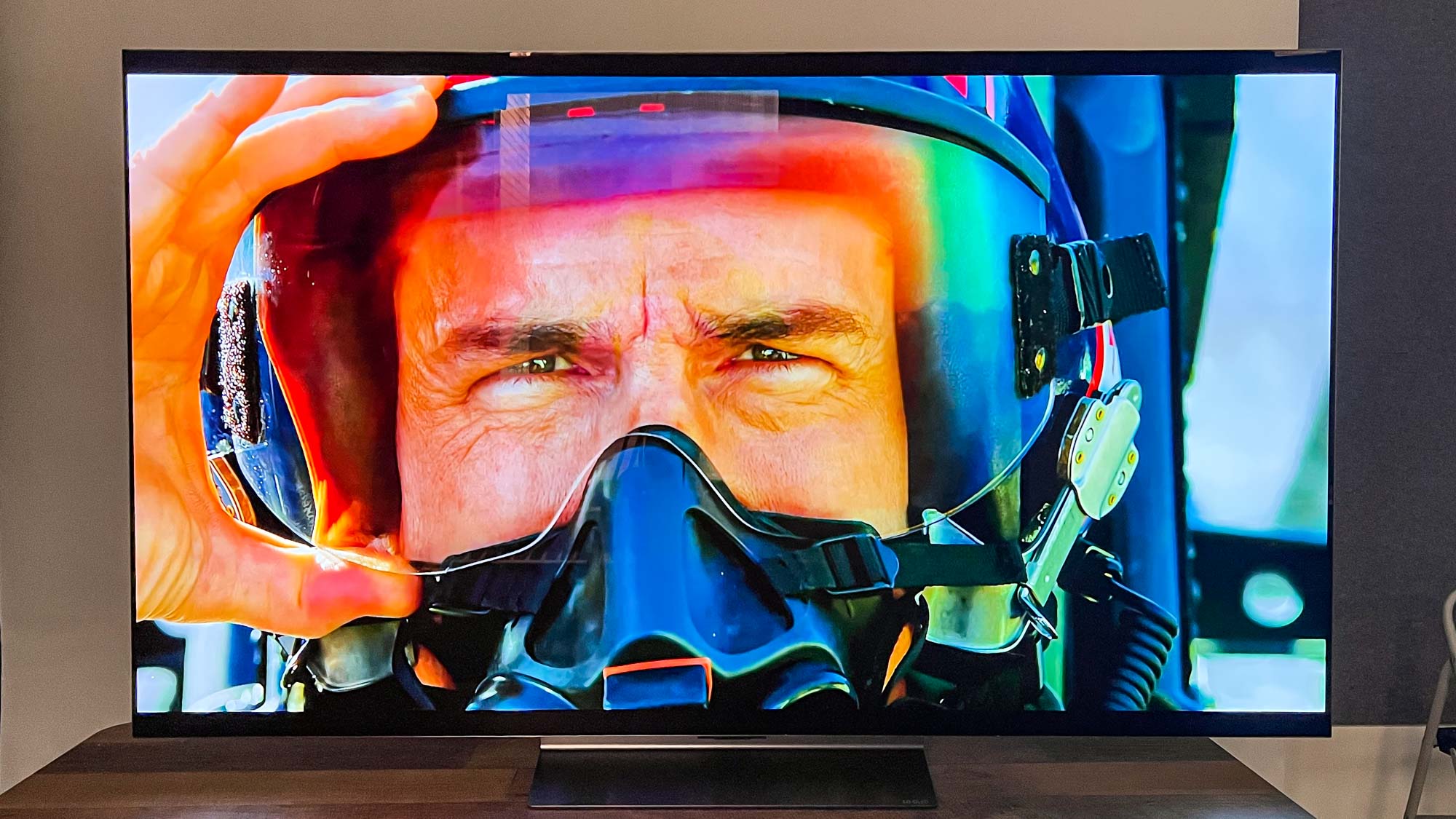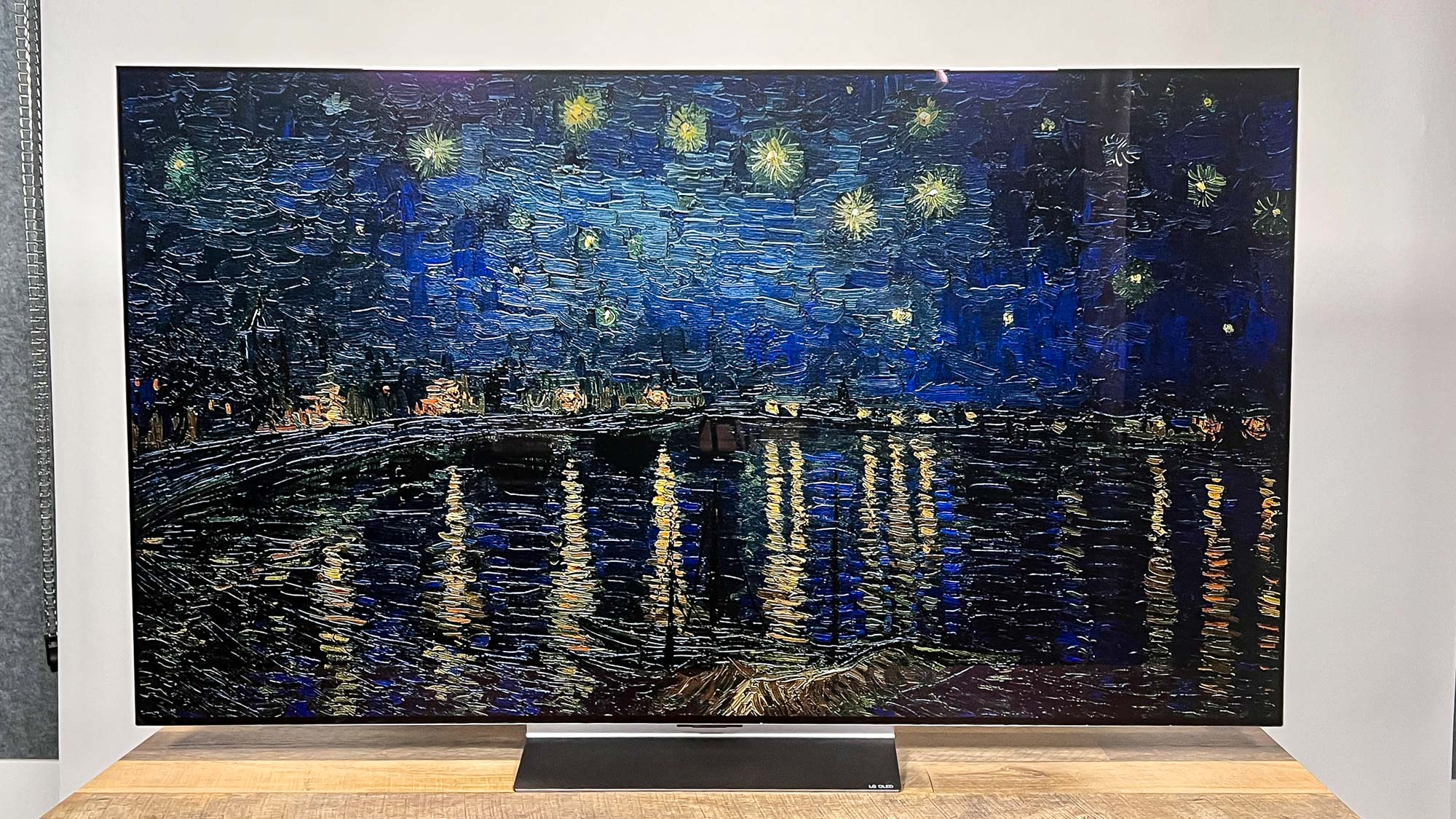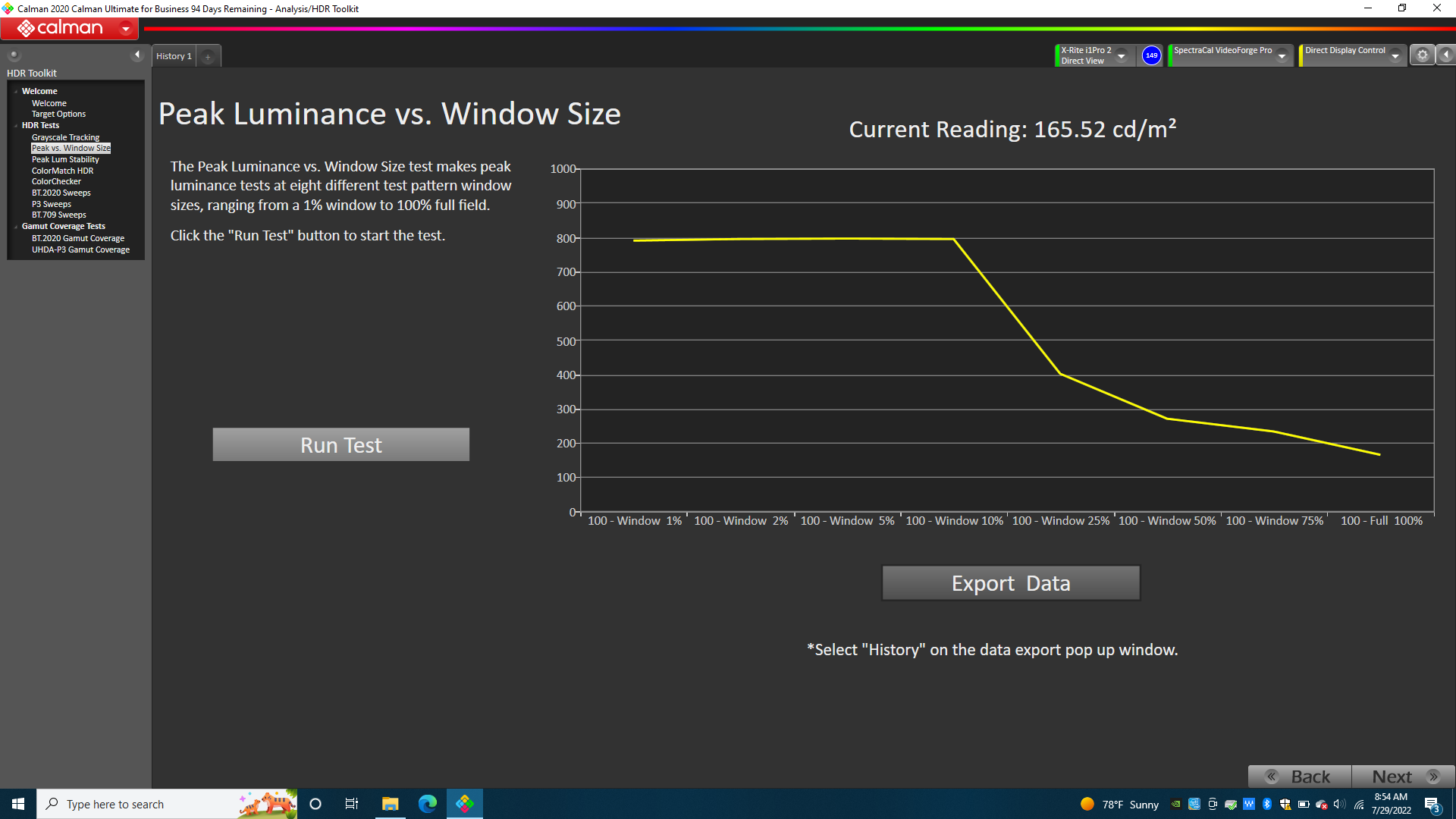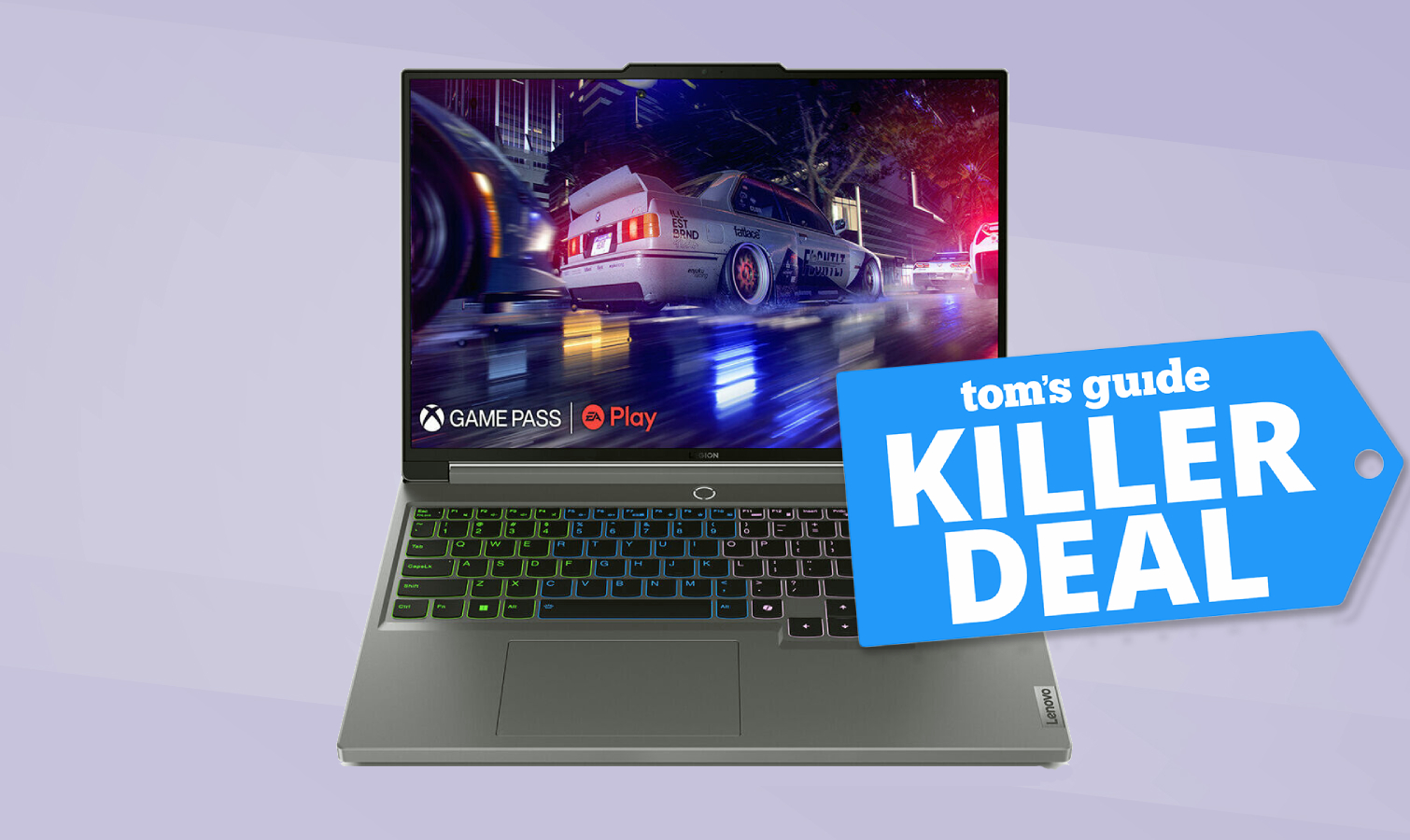I test TVs for a living, and this was my favorite 4K TV of 2022
The LG C2 OLED was the best TV I tested in 2022

As the head of testing for Tom’s Guide’s parent company, Future, I spend most of my days waist-deep in all the latest technology products. But if a lot more laptops, phones, and monitors pass through my hands on a yearly basis, TVs tend to be the most memorable. Not just because of their size, but because they’re perhaps most visibly at the forefront of where the tech industry is today and where it’s going tomorrow. And when you come across a really good TV, there’s nothing quite like it.
I tested a few particularly fascinating and dynamic sets this year: Size-wise, nothing beat the Vizio P-Series Quantum X 85" (P85QX), and its brightness set some records, too. I saw upwards of 3,000 nits in some circumstances...albeit not many. My living room isn’t quite big enough for it to live here forever, but it was a zany house guest for a while.
While the Hisense 65U8H didn’t get quite as dazzling as the Vizio, but because its maximum brightness of 1,500-1,600 nits in more situations, it’s impressive in its own right. And if you really love brightness, its $999 sticker price is tough to beat.
The best TV of 2022 I tested was the LG C2 OLED
But in most cases, the best TV isn’t going to be one that excels in one area and bombs in all the others. It’s going to be the one that gets the most right, the most consistently, and offers the best overall experience in accordance with its price. When measured by those metrics , there’s not much doubt that the best TV I tested this year was the LG C2.
No, that’s not exactly a surprise, as it’s earned its share of accolades this year, including from Tom’s Guide’s own Kate Kozuch, who deemed it “this year’s set to beat” and “the new standard for comparison.” And she’s not wrong.
Building on the already-remarkable C1 from last year, LG implemented a ton of tiny improvements that have supercharged the picture quality and made an already excellent set even better.
Building on the already-remarkable C1 from last year, LG implemented a ton of tiny improvements that have supercharged the picture quality and made an already excellent set even better. (For what it’s worth, the moderator at an industry event I attended earlier this year proudly proclaimed the C2 as his personal set of choice at home—and if anyone knows TVs, it’s him.)
What makes the C2 so good? First off, it has an OLED screen, which gives you essentially infinite contrast levels (the difference between black and white) and ensures you’ll see the deepest, darkest shadows in piece of content that uses them. If you’ve never viewed an OLED and aren’t aware how much of a difference that makes, scope out The Batman or Denis Villeneuve’s Dune and luxuriate in the luscious, bottomless blacks that transform those movies’ landscapes from inanimate backgrounds into almost full characters.

Putting the LG C2 OLED to the test
Things got even starker—and more arresting—when I employed my TV testing equipment (an X-Rite i1 Pro spectrophotometer, a SpectraCal VideoForge Pro pattern generator, and Portrait Displays’ Calman software) to transform all the light into objective data and recognizable, comparable numbers.
To begin with, the C2’s brightness. LG claims it uses a Brightness Booster to deliver up to 20% brighter images than it’s A- and B-family sets, and if the differences I saw weren’t that dramatic, they were still eye-popping. The C2’s SDR brightness of about 230-250 nits (in its Standard and Filmmaker modes, the latter being close to out-of-the-box calibration) isn’t bad by itself, but its HDR brightness gets up in the vicinity of 800 nits across as much as 10% of the screen, which is something you don’t see from a lot of OLED sets—this is about 200 nits brighter than even LG’s 65-inch B-series TV. Taken together, these two factors alone make the C2 a movie lover’s dream.

The C2’s color is excellent, too. It covers 99.98% of the Rec. 709 (SDR) color gamut in Filmmaker Mode, with its Delta-E (the difference between the color at the source and the color as displayed, with lower numbers always better) at 1.7 in Filmmaker Mode and 1.49 in Cinema mode. And it hardly disappoints with HDR color, either, covering more than 99% of the UHDA-P3 color gamut (similar to DCI-P3, but with a slightly different red primary) and about 74% of the even wider BT.2020 gamut.
The latter isn’t the best we’ve seen this year—that would be the Vizio M-Series Quantum 50-inch, covering upwards of 81%—but it’s still better than a fair number of TVs we see, and nothing to worry about at present given how little BT.2020 content is out there to watch. (It’s worth mentioning that few sets even come close to 100% on this test.)
Factor in the set’s super-low input lag (we saw as low as 9.5ms when we activated the game booster function), which means it’s also near-ideal for gaming; all of its HDMI ports supporting the fastest HDMI 2.1 standard; and a shockingly low price given the features and capabilities (as I write this, it’s available online for $1,699.99), and the result is a TV that gets everything right and will make a visual meal out of anything you give it.
Yes, the numbers prove that the C2 delivers a terrific picture ... But your eyes are the ultimate arbiter, and the C2 excels every bit as much there.
For years, I dismissed the value that TVs bring to the living room, thinking that they didn’t offer me much I couldn’t get more conveniently from my computer or iPad. Sets like the LG C2 have shown me just how wrong I was. Yes, the numbers prove that the C2 delivers a terrific picture, bright and colorful in all the ways you want. But your eyes are the ultimate arbiter, and the C2 excels every bit as much there.
Sign up to get the BEST of Tom's Guide direct to your inbox.
Get instant access to breaking news, the hottest reviews, great deals and helpful tips.
Matthew Murray is the head of testing for Future, coordinating and conducting product testing at Tom’s Guide and other Future publications. He has previously covered technology and performance arts for multiple publications, edited numerous books, and worked as a theatre critic for more than 16 years.
-
rkwjunior I just bought a new 55" C2. It's replacing a 55" Panasonic plasma, and I have to say, the LG pic lsnt as good. The plasma just looks more natural, the oled picture looks kind of fake I guess I'd call it. I'm not impressed at all. I'm actually kind of disappointed to be honest.Reply
I'm disappointed that this is the new benchmark for televisions. I also have a Pioneer Elite and it's miles better, it's just looks more real and sharp. Im gonna be real disappointed when that TV finally dies. -
Powerdman Rkwjunior, I recommend you tweak the settings. My personal experience with the OLED LG is to customize the settings as soon as you set it up. I usually spend a week fine tuning to my desired settings as out of the box it's either too bright, or too dim, orReply
over contrasted, and whatever else. Not knocking on your experience, just giving a tip of what I had to do with mine to get it perfect for my eyes. :) -
eknepfler @admin how is this TV possibly better than the QDs like the S95B or the A95K? everything I've seen everywhere indicates that those are better, yet I keep seeing the LG C2 held up as the best somehow. Honestly I'm seeing the C2 so much it's made me wonder if LG isn't paying for these reviews somehow. Is it a cost thing? Because they're not THAT far apart, both over $1000, with the C2 being about $300 or so cheaper, and I could buy the argument that the C2 is possibly SO good that the extra cash for these first-gen QDs aren't worth it yet, but C2 as the "best"? Something seems off here.Reply -
Skyhi_r33 I am in 100% agreement that the QD-oled tv is far Superior especially in bright rooms they have a max nit of 1500 with all the benifits of a oled panels perfect blacksReply -
djcalligraphy Replyeknepfler said:@admin how is this TV possibly better than the QDs like the S95B or the A95K? everything I've seen everywhere indicates that those are better, yet I keep seeing the LG C2 held up as the best somehow. Honestly I'm seeing the C2 so much it's made me wonder if LG isn't paying for these reviews somehow. Is it a cost thing? Because they're not THAT far apart, both over $1000, with the C2 being about $300 or so cheaper, and I could buy the argument that the C2 is possibly SO good that the extra cash for these first-gen QDs aren't worth it yet, but C2 as the "best"? Something seems off here.
They're talking about the best TV in terms of value, not overall best picture. The best picture award would always go to a TV with an insane, unattainable price, and these articles wouldn't be relatable at all. I agree with TG, the C2 gives the best picture FOR THE PRICE. -
djcalligraphy Replyrkwjunior said:I just bought a new 55" C2. It's replacing a 55" Panasonic plasma, and I have to say, the LG pic lsnt as good. The plasma just looks more natural, the oled picture looks kind of fake I guess I'd call it. I'm not impressed at all. I'm actually kind of disappointed to be honest.
I'm disappointed that this is the new benchmark for televisions. I also have a Pioneer Elite and it's miles better, it's just looks more real and sharp. Im gonna be real disappointed when that TV finally dies.
Check out Rtings website for calibration. While every TV differs once you get down to the fine tuning, their calibration guides are usually spot-on for the basic settings tweaks. It makes a world of difference and they've already done all of the testing so you don't have to. -
Jdotsu Replyeknepfler said:@admin how is this TV possibly better than the QDs like the S95B or the A95K? everything I've seen everywhere indicates that those are better, yet I keep seeing the LG C2 held up as the best somehow. Honestly I'm seeing the C2 so much it's made me wonder if LG isn't paying for these reviews somehow. Is it a cost thing? Because they're not THAT far apart, both over $1000, with the C2 being about $300 or so cheaper, and I could buy the argument that the C2 is possibly SO good that the extra cash for these first-gen QDs aren't worth it yet, but C2 as the "best"? Something seems off here.
It's quite simple. LG C2 has Dolby Vision. Samsung = no Dolby vision. The only TV superior would be the Sony A95k but at $3000 vs $1700 it's a big price jump. I don't know how anyone could buy a Samsung when it literally prevents you from seeing the best part of 4k and that is seeing a movie how the director wanted you to see it. -
52.bill.bell I've been looking for a 2nd monitor/TV for my computer. I use it as a monitor, streaming and Over-The-Air (OTA) TV, It has a 42" version which is perfect. I was ready to get it until I realized doesn't support ATSC 3.0. I generally keep a TV for 10 years. Although ATSC 3.0 is new it would be short sighted not to get one with ATSC 3.0 support. I'm sort of surprised you would recommend this TV or at least mention that it doesn't support ATSC 3.0. I'm looking at the Samsung QN90B now.Reply

